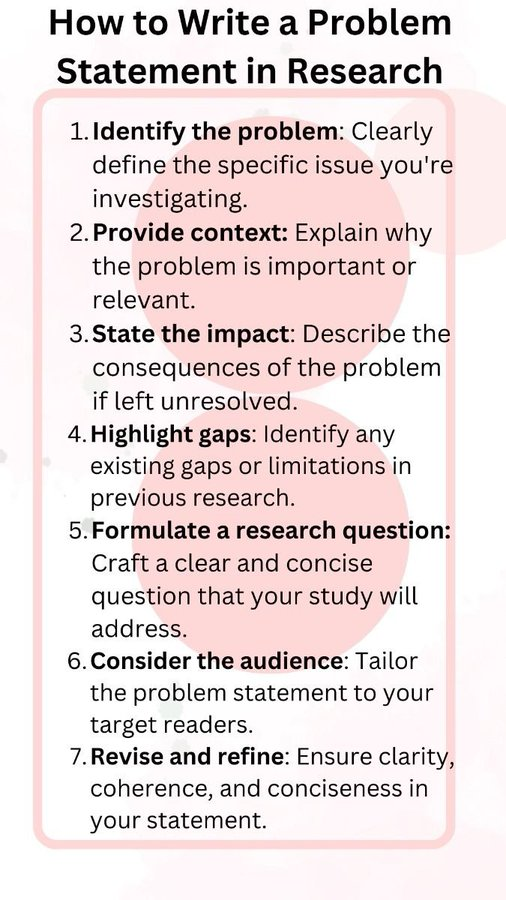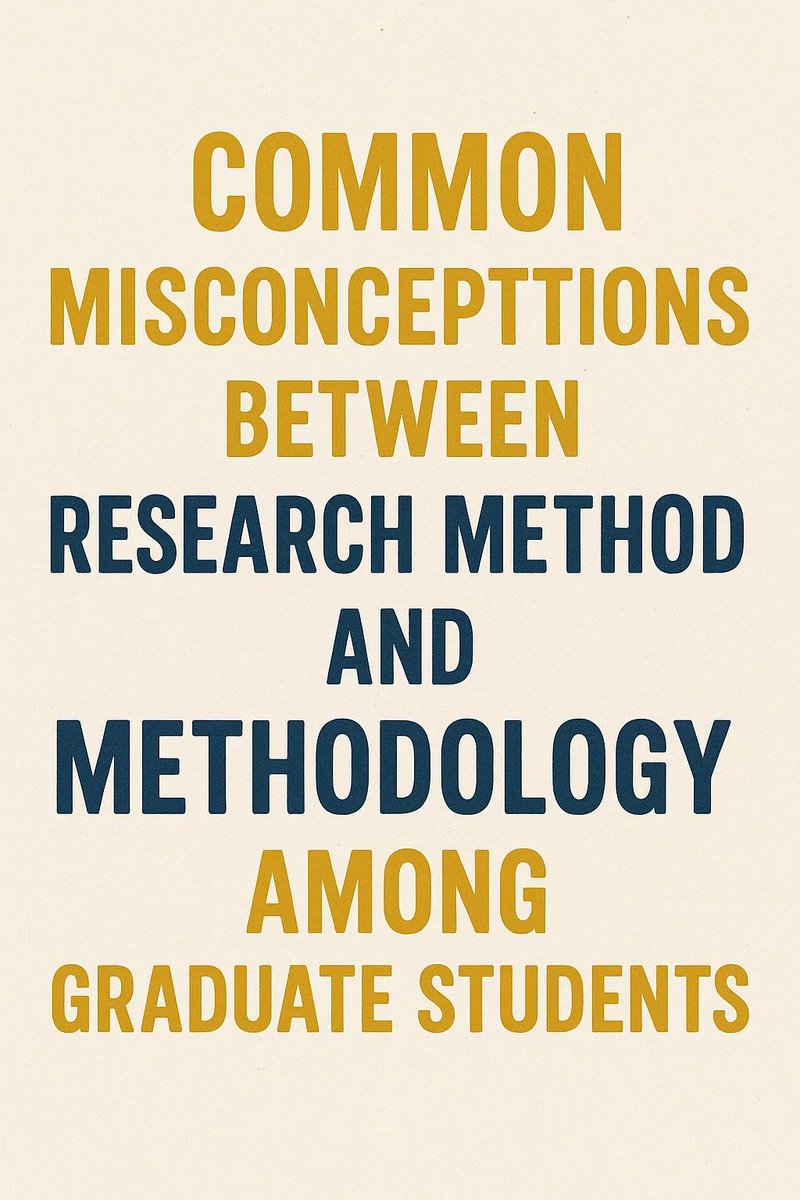How to Write a Rock-Solid Problem Statement in Research (Step-by-Step Guide)
A problem statement is the heart of your research it tells readers why your work matters.
Follow these 7 steps to craft one that’s clear, compelling, and impossible to ignore!
- Thread-
A problem statement is the heart of your research it tells readers why your work matters.
Follow these 7 steps to craft one that’s clear, compelling, and impossible to ignore!
- Thread-

1. Identify the Problem
Goal: Be laser-specific.
❌ Weak: “Education systems have issues.”
✅ Strong: “Only 40% of rural students in India have access to STEM resources, limiting career opportunities.”
Goal: Be laser-specific.
❌ Weak: “Education systems have issues.”
✅ Strong: “Only 40% of rural students in India have access to STEM resources, limiting career opportunities.”
2. Provide Context
Goal: Explain why it’s urgent.
Example:
“STEM skills are critical for India’s tech-driven economy. Rural students risk being left behind, worsening economic inequality.”
Goal: Explain why it’s urgent.
Example:
“STEM skills are critical for India’s tech-driven economy. Rural students risk being left behind, worsening economic inequality.”
3. State the Impact
Goal: Show the stakes.
Example:
“Without intervention, this gap could cost India $50B in lost GDP by 2030.”
Goal: Show the stakes.
Example:
“Without intervention, this gap could cost India $50B in lost GDP by 2030.”
4. Highlight Gaps
Goal: What’s missing in existing solutions?
Example:
“Current policies focus on urban schools, ignoring rural infrastructure challenges.”
Goal: What’s missing in existing solutions?
Example:
“Current policies focus on urban schools, ignoring rural infrastructure challenges.”
5. Formulate a Research Question
Goal: Turn the problem into actionable inquiry.
Example:
“How can low-cost STEM kits improve learning outcomes for rural Indian students?”
Goal: Turn the problem into actionable inquiry.
Example:
“How can low-cost STEM kits improve learning outcomes for rural Indian students?”
6. Consider Your Audience
Academics: Emphasize theoretical gaps.
Policymakers: Stress practical implications.
Example:
For policymakers: “This study identifies scalable, budget-friendly solutions for rural STEM education.”
Academics: Emphasize theoretical gaps.
Policymakers: Stress practical implications.
Example:
For policymakers: “This study identifies scalable, budget-friendly solutions for rural STEM education.”
7. Revise & Refine
Goal: Cut fluff, boost clarity.
Before: “There are problems in education that need fixing.”
After: “Rural STEM resource gaps hinder India’s economic growth; this study tests low-cost interventions to bridge them.”
Subscribe @ScholarshipfPhd for more Premium Content/Tips
Goal: Cut fluff, boost clarity.
Before: “There are problems in education that need fixing.”
After: “Rural STEM resource gaps hinder India’s economic growth; this study tests low-cost interventions to bridge them.”
Subscribe @ScholarshipfPhd for more Premium Content/Tips
• • •
Missing some Tweet in this thread? You can try to
force a refresh










